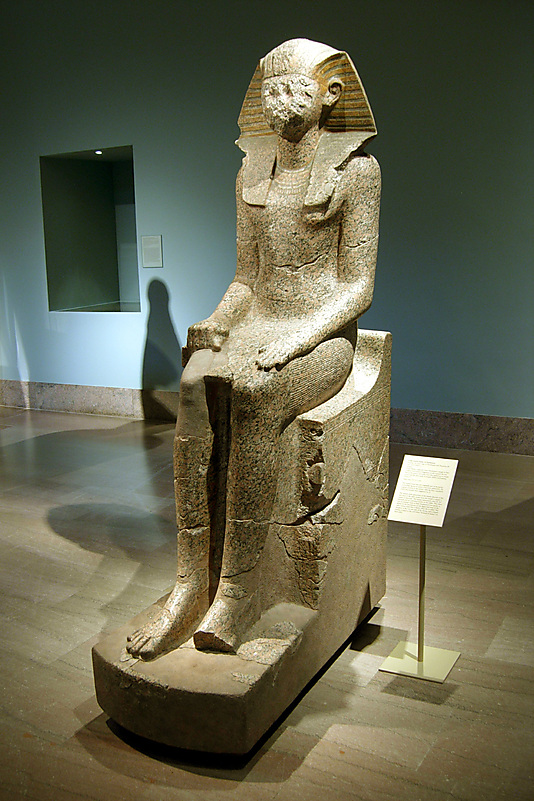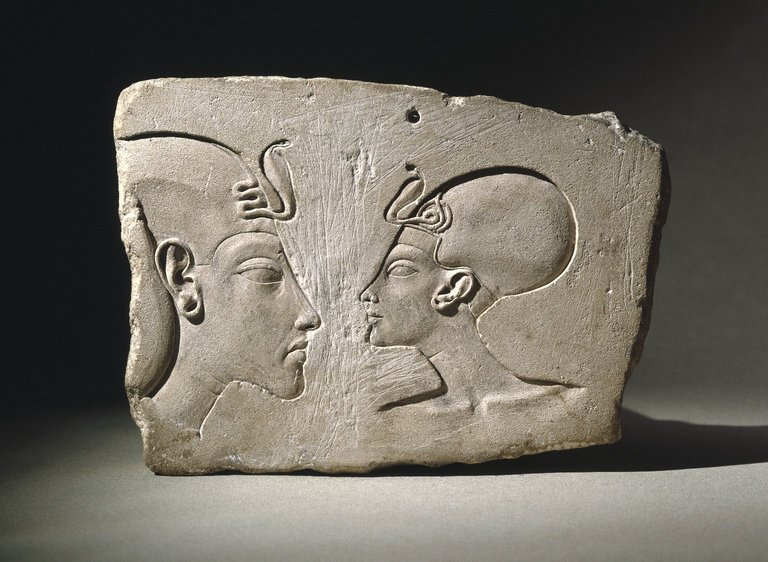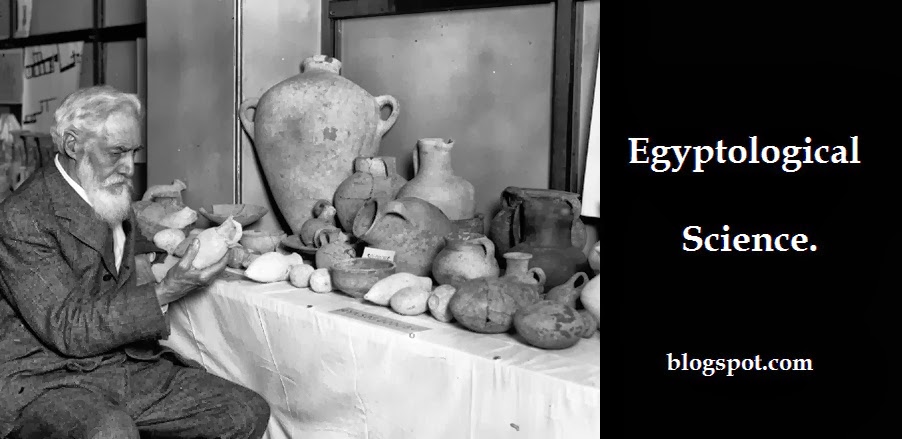Monday 30 September 2013
Large Seated Statue of Hatshepsut
In
this statue, Hatshepsut is portrayed as a male pharaoh dressed in the
costume of an Egyptian king, althought she does not wear the usual
false beard. Like all the statues from Hatshepsut's temple, this one
was broken into many pieces after her death by her nephew and
co-ruler, Thutmose III. Unlike most of the others, the features of
her face have also been systematically destroyed. Certain details of
the statue were originally painted, and traces of pigment are still
visible on the headdress and broad collar.

The Wilbour Plaque
The Wilbour Plaque is named for the early American Egyptologist Charles Edwin Wilbour (1833–1896), who acquired it in Egypt in 1881. The small slab is not part of a larger scene but complete as it was made. It was intended as a sculptor's model, to be studied and imitated by students and beginning artists. With the hole at the top, it could be hung on a workshop wall. On the left is the head of a king, most probably a representation of Akhenaten, who wears the baglike khat headdress with a royal uraeus. Opposite him is the head of a queen wearing the ovoid cap crown often worn by Nefertiti, also with a uraeus. Both heads have ear holes for earrings. The carving is a splendid example of the elegant royal style that developed toward the end of the Amarna Period.

Source: http://www.brooklynmuseum.org/opencollection/objects/3134/The_Wilbour_Plaque#

Source: http://www.brooklynmuseum.org/opencollection/objects/3134/The_Wilbour_Plaque#
The egyptian collection in Brooklyn!
Today I recommend you the website of the Brooklyn museum, where you can find a section dedicated to Ancient Egypt. This is the link: www.brooklynmuseum.org/opencollection/egyptian


Labels:
Brooklyn museum,
egyptian art,
egyptian collection,
museum
Subscribe to:
Posts (Atom)
